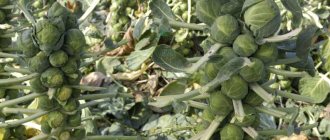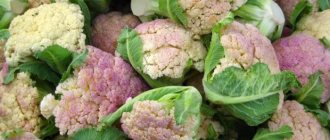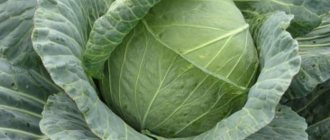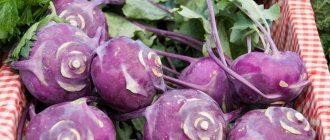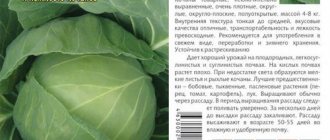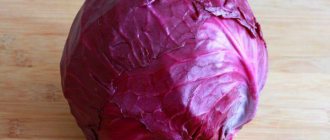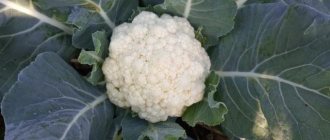The end of October, the beginning of November is the time when housewives chop cabbage and salt it in jars, barrels, and pans. For some, it is appetizing, crispy, tasty, and just looking at it makes your mouth water. For others it is soft, snotty and bitter. Recipes for pickling differ little from each other; they all have the same ingredients: cabbage, salt, carrots. Sometimes spices are added to it: dill seeds, sauerkraut
Enough time has passed since putting it in a jar, pan, or plastic barrel; it’s time to eat the cabbage. It is covered with thick mucus, which stretches and smells unpleasant. The only reason for “snot” on sauerkraut is a lack of salt.
Those who adhere to the ancient principles of barrel fermentation add 30 g of salt per 1 kg of raw materials. The fermentation process lasts about 2 weeks, it is more intense at a temperature of 20 °C, sometimes salt is added to the brine at this time.
You can understand that it needs to be added by external signs. When there are few lactic acid bacteria, too much foam forms on the surface. Harmful bacteria multiply in it and disrupt the fermentation process.
In this case, the foam is removed and the brine is added a little salt. The workpiece is sent for compost if the brine looks like jelly. It will not be possible to restore cabbage; it is not worth risking your intestinal health.
Variety selection
The variety affects the taste of the fermented product. Late varieties are suitable for harvesting cabbage for the winter using the pickling method. There is no need to prepare early. When salt is added, it immediately releases all the juice; it is not enough for long-term fermentation.
Mold processes will begin in the workpiece, due to which all the work will go down the drain. Pickling and canning of early-ripening varieties is done according to other recipes, and for pickling they use proven, late-ripening and mid-ripening varieties with a high sugar content:
- "Glory";
- "Belorusskaya";
- "Present";
- "Moscow late";
- "Kharkov winter"
Late cabbage appears in vegetable gardens in October or at the very end of September. The heads of cabbage suitable for harvesting are dense, tight, the leaves are white and juicy. It is better not to ferment varieties for long-term storage in the cellar; they have a lot of coarse fiber, so the taste of the final product will be worse.
Reasons for softness of fork leaves when salting
If the cabbage turns out soft during pickling, it will no longer be possible to return its crunch. This product should either be fried, used for soups, or eaten soft. In order to avoid mistakes next time, you need to know why pickled fork becomes soft.
Factors influencing the crunch of a vegetable:
- variety of vegetable. Its final taste when preparing a dish depends on it. Not all varieties are suitable for pickling and pickling. To ensure that the vegetable pleases with its crunch and is not soft, late varieties are used: Slava 1305, Podarok, Belorusskaya, Menza F1, Valentina F1, Mara, Amager 611, Moskovskaya late, Kharkovskaya zimnyaya, Belosnezhka;
- formation of the vegetable head. The head of cabbage should be formed and elastic to the touch;
- cooking recipe. The amount of salt and fermentation time spent in the heat are important. The more salt, the crispier the finished salad will be, but if you add too much salt, the product will be impossible to eat. The vegetable begins to ferment on the 2nd day of pickling, and finishes on the 3-5th day. The main sign of the end of fermentation is the cessation of the formation of bubbles on the surface. It is at this moment that the pickles need to be moved to a cool place;
- moon phase. According to the lunar calendar, fork fermented during the waxing moon always turns out crispy. The growing phase forces the cabbage leaves to absorb juice and salt, thereby making the product juicy and crispy.
A moderately salted product is stored well and does not lose its properties and vitamins during storage. Following the basic rules of pickling allows you to get a high-quality and tasty salad.
Important If salting is done correctly, the juice will flow straight over the edge of the bucket or jar, so the salad is placed in an additional container.
Sauerkraut has a bitter taste
There are several reasons for the bitter taste. The first is that the head of cabbage is initially not tasty, the leaves are bitter. You should definitely try fresh cabbage. Its taste depends on growing and storage conditions.
Bitterness may appear due to insufficient watering, excessive application of fertilizers during the growing season, or improper storage. A light frost improves the taste of cabbage; frozen cabbage heads spoil it.
Young housewives' sauerkraut tastes bitter because they don't pierce it. Gases released by bacteria during fermentation accumulate in it, and they spoil the taste. Previously, cabbage was salted in wooden barrels, the taste was always excellent because the wood breathes.
To ensure excellent taste, 3 days after laying, pierce the cabbage mass with a wooden stick. Make holes every 12 hours around the perimeter and in the center. When using 3-liter jars, it is enough to pierce them in one place with a wooden skewer.
Sometimes the housewife is in a hurry and interrupts the fermentation process ahead of time, this also affects the taste. In this case, you need to put the container in a cooler place for further fermentation. Fully cooked cabbage will taste great. It takes about 2 weeks to prepare.
Many people are faced with the fact that cauliflower does not last long, and having bought it at the market, you need to immediately figure out what to use from it...
There is no need to throw away cabbage that is slightly bitter. It won't harm your health. The taste can be improved with dressing. Add finely chopped onions, dill, a little sugar, unrefined sunflower oil.
Why does cabbage become soft?
Reasons why cabbage turns out soft, dark and slimy:
- if the heads of cabbage were harvested after frost and the vegetable was frozen, then the salad will not only be soft, but will smell unpleasant and have a sweetish taste;
- vegetables grown with nitrates are not stored for a long time and when processed does not live up to expectations. If just such a product is on the table, then the pickle will taste mild;
- the early variety will not crisp and will not release enough juice;
- If you turn forks straight from the garden into pickles, then the dish will not be pleasing. After harvesting from the garden, the head of cabbage should lie down for some time;
- If you do not pierce the pickle during fermentation, thereby eliminating carbon dioxide, the dish will seriously lose its taste and color;
- There is no need to press or crush the vegetable too much after chopping; the cabbage is mixed with salt and placed in a container;
- containers made of glass, enamel or wood are used for pickling;
- After 2-3 days of fermentation, the pickles are put away in the cold, in the refrigerator or cellar.
Compliance with the recipe and rules for choosing a head of cabbage will allow you to serve the most delicious dish on the table. If you compact the leaves well into the container and put a weight on top, the pickle will not be slimy.
Reviews
At one time I tried a bunch of recipes, the result was the same - the brine was viscous, slimy, I threw away the cabbage. Then I found a way out of the situation, started buying store-bought and adding its brine to my jars, since then everything has been fine - cabbage is never sour and can be stored for a long time.
Mom buys heads of cabbage for pickling only at the end of October, selects them according to their shape; in her opinion, they should be flattened at the top and bottom. She believes that round forks in pickling are less tasty.
I don’t use fine salt or chop it finely. I cut into strips of 1 cm. The taste depends 90% on the variety. I choose large, dense heads of cabbage with succulent leaves. They give a lot of juice, active fermentation begins on the second day.
Delicious sauerkraut is easy to prepare if you follow the advice of experienced housewives. Salt it on the waxing moon on the male days of the week, use varieties suitable for pickling, and coarse pickling salt.
How to make sauerkraut correctly
Sauerkraut is a naturally fermented product containing a rich complex of vitamins and nutrients: Vitamin C and fiber help improve intestinal function, ascorbic acid strengthens the immune system. In terms of the amount of minerals, this product is among the leaders. The fermentation process must be approached very carefully, taking into account all the features: using a certain variety, selecting a container, adjusting the temperature of the external environment where the container with the starter will be located.
Variety selection
The variety of cabbage to be pickled plays an important role in preparation. It must be of late varieties. Suitable varieties for obtaining juicy, sweet fruits are the following: “Moskovskaya late”, “Valentina F1”, “Kharkovskaya zimnyaya”, “Geneva F1”. These varieties are late-ripening and must be harvested in late September–early October. Such forks have a yellowish color; when cut, they release juice; the leaves are of medium thickness, elastic, with a sweetish taste.
Proportions
For delicious sauerkraut, it is important to maintain the proportions of ingredients: salt, spices, carrots. Some people like to add hard apples and pomegranate seeds to fermentation. It's up to your taste. The main thing is that you need to put 2 tbsp of salt. spoons per kilo of product. Failure to comply with the proportions will lead to over-salting or under-salting of the product, and under-salting will lead to spoilage. Vegetables should take up no more than 1/4 of the volume of cabbage.
Conditions
The container must be either glass or wood. Plastic and metal containers are contraindicated - plastic can give off its odor, and the metal will oxidize. Be sure to place a weight or other pressure on top of the cabbage shavings that have been cooked and placed in a container. The oppression should not be stone or metal. Between the oppression and the leaven you need to lay a pre-prepared linen or cotton cloth. If it is fermented in a bottle, then oppression is not necessary. Some housewives believe in omens and prepare fermentation according to the recommended days of the lunar calendar.
Basic cooking rules
As in any business, sauerkraut has its own subtleties. To ensure everything succeeds the first time and the cabbage turns out crispy, you need to follow these recommendations:
- use only late varieties. Only some mid-season types of cabbage are suitable for pickling. In the early ones there are not enough components at all for the full development of fermentation processes;
- There is no need to wash the fruit. It is enough to remove the top leaves, trim off the damaged and frozen parts;
- You should chop the cabbage not along the veins, but across it, otherwise it may turn out soft;
The dish is ready to eat in two weeks. If you plan for longer storage, you need to move the containers to the cold. Otherwise, the cabbage will become soft and begin to rot.
Cooking technology
First of all, you need to prepare the vegetables. The top leaves are removed from the cabbage and the head is removed. It is then chopped or cut into larger pieces. You can also ferment the whole vegetable. This requires fairly large pots or barrels. Carrots can be grated on a coarse grater (the color of the finished product will not be snow-white, but slightly orange) or cut into strips or circles. Cranberries, apples, peppers, and beets are used as additional components. All ingredients are placed in prepared containers and sprinkled with salt. Then press it with your hands until juice forms. However, you should not press too hard, otherwise the cabbage will lose its crunch. Here's another example of why sauerkraut becomes mushy. A flat plate is placed on top and a weight is placed. This way, juice and lactic acid, which acts as a preservative, will be released faster. The ripening process will last several days. The foam that forms as a result must be removed. It is also necessary to make several punctures to allow gases to escape.
Work on mistakes
It’s very disappointing when sauerkraut doesn’t work out. But the errors are the same, so it’s enough to analyze them once to avoid such situations again.
If the cabbage turned out to be too sour, most likely the containers were located in a room with a temperature above 17-20 degrees. Heat provokes the very rapid development of butyric acid bacteria. They are necessary for fermentation, but if there are too many of them, the cabbage will turn sour.
Bitterness indicates the possible use of frozen cabbage, or that after shredding the vegetable was moved to a too cold place.
The sauerkraut should be crispy. If it is soft and “snotty”, look for the reason in the following:
- using an early variety or frozen vegetable;
- fermentation at too warm air temperatures;
- a small amount of salt (normally should be 20 grams per kilo);
- The cabbage was rarely “pierced” and the air in it stagnated.
A dish covered with mucus is obtained when fermented in excessive heat, and also when the brine does not completely cover it.
Quite often the vegetable may change color. If the white cabbage turns green, it means there was too much air during cooking. If it darkens, it means it was cooked in a metal container and chemical reactions occurred. And if it turns red, it means there was too much salt.
Carrots are an integral element of sauerkraut. But if there is too much of it, it can also cause spoilage of the dish. For 10 kg you can take no more than 300 grams of carrots.
Choosing a vegetable for pickling
Traditionally, sauerkraut began to be fermented after October 14 (the Feast of the Intercession). By this time, it is already quite rich in natural sugar, due to which lactic acid is released. Late varieties are best suited. The head must be intact, weighing at least 700 grams, without signs of rotting. Early varieties are not suitable. If the question arises about why sauerkraut has become soft, the first answer will be the wrong variety. Mid-late cabbage is also suitable for processing.
Other ingredients must be chosen just as carefully. Regular rock salt will do. Iodized water is not suitable for these purposes. If you ferment cabbage with iodized salt, you should not be surprised and ask why the sauerkraut is soft.
Is it possible to eat cabbage if it doesn’t turn out well?
Fermented treats are associated with crunch, pleasant taste and rich aroma. But hardly anyone wants to eat cloudy “snot.” Throwing away? But this is a translation of the product!
If cabbage does not have a putrid odor, but simply looks unpresentable, it can be used to prepare pies, dumplings, borscht and other dishes that require long-term heat treatment of this product.
But if there is a not very pleasant aroma, it is better to throw it away. It is dangerous to give such food even to animals and poultry.
Is it possible to eat snotty and dark cabbage?
If the pickle fermentation process takes place at a temperature above 17 degrees or in the sun, then we can definitely say that the pickle will turn out slimy.
The degree of compaction in this case is also important. Since in the free space there will be rapid proliferation of bacteria, which cause darkening and the formation of mucus. The amount of juice also affects the formation of putrefactive bacteria and softening of the leaf, so the product must be completely covered with juice. Important: Before eating cabbage with mucus, it must be washed.
If you eat snotty cabbage, you cannot cause harm to the body, but it is better to use it for long-term heat-treated dishes. Such dishes can be soups, pies, pies. If mucus formation occurs on top at the beginning of fermentation, then the leaves need to be mixed with the lower layers and the fermentation process must be continued in the refrigerator.
The pickle will acquire a bitter taste if the fermentation process occurs at a temperature below 17-18 degrees.
Salting the leaves with a fork on the men's day of the week will make the dish tasty, the leaves will be crispy and juicy.
The correct choice of a head of cabbage for pickling, adherence to cooking and fermentation technology is important for sauerkraut. Don’t get fancy when cooking, don’t deviate from the recipe and the dish will be worthy of all praise.
Reviews
I fermented cabbage twice and it never worked. Thanks to mommy, who, when she came to visit, gave a step-by-step master class. It turned out that my main mistake was too many carrots and not squeezing them enough. Girls, if you don’t have enough strength, attract your husbands. There should be a lot of juice. Only then will the cabbage turn out exactly as it should!
I have been making sauerkraut for many years in a row. I love serving it with jacket potatoes or mashed potatoes. This is a must-have dish when the cold weather sets in. But one time it didn’t work out. Although I did everything according to the rules. It came out slippery and dark. I read your article and I think maybe there were nitrates in it. Good thing I threw it away.
I make sauerkraut for both children and grandchildren. I cook in large enamel barrels. No one can make it taste this good. And I have a little secret. In addition to salt and carrots, I add a bay leaf and a pea of allspice for every kilogram. I crush it with a wooden masher in small portions. There's a lot of juice. But I learned for the first time that you need to cut across the grain. I will definitely use your advice!
And finally, folk wisdom... It has long been believed that you should ferment cabbage only on “men's” days (Monday, Tuesday and Thursday) and on the new moon. In 2021, the most favorable days for sauerkraut are October 25-30, November 1 and 2, and after that the period from November 19 to 30.
How to cook properly
The vegetables are chopped and mixed with salt, squeezing a little to release a little juice. There is no need to squeeze the products too much to prevent them from losing their elasticity. The prepared mass is transferred to a suitable container and filled with cooled brine. It is prepared at the rate of 1 tbsp per 1 liter of water. l. salt. Vegetables should be covered with liquid at all times. If it is not enough, add brine.
While fermentation is underway, the cabbage is pierced to the bottom with a wooden skewer twice a day. This helps the trapped gases to escape. If this is not done, the dish will taste bitter. Sometimes a little sugar is added to the prepared brine to improve the taste. It adds a savory flavor to the appetizer, but too much sweetness softens the cabbage.
As an additive, along with carrots, add beets, pickled mushrooms, sour varieties of apples or plums, cranberries, sweet peppers, and pickled cucumbers. The best spices for cabbage include bay leaf, dill seeds, anise, peppercorns, and cumin.
Why does sauerkraut come out soft?
During fermentation, an interesting chemical process occurs: under the influence of salt, the vegetable releases juice, which contains sugars. They act on lactic acid bacteria living on cabbage leaves (as well as on other vegetables). This is how fermentation occurs, resulting in the formation of lactic acid, which destroys harmful bacteria and fungi. It is this that gives sourness to cabbage and makes them crispy.
Thanks to it, the fermented product is stored for a long time and retains the vitamins it contains in almost its entire composition. In order for fermentation to go as expected, you need to take high-quality products in sufficient quantities, suitable utensils, and also adhere to time and temperature restrictions.
Unsuitable variety
The cabbage head for fermentation should be juicy and sweet. If there is not enough juice, then lactic acid is formed in less quantity than necessary, and putrefactive bacteria begin to predominate. This causes vegetables to soften, darken and eventually spoil. Consequently, not all cabbage varieties have suitable characteristics.
The following varieties are unsuitable for fermentation:
- early ripening, since such heads of cabbage are loose, loose, and do not contain enough sugars necessary for fermentation; they are suitable for consumption only fresh;
- Not juicy and low-sweet late varieties intended for winter storage.
Mid-season and late-ripening varieties of white cabbage are best suited. In the fall, when these varieties ripen, the required amount of sugars accumulates in the vegetables, which feed the lactic acid bacteria.
Incorrect amount of salt
Salt is an essential ingredient in almost all winter preparations, including fermentation. You should know that salt does not actually take part in the chemical process of fermentation. Lactic acid is formed only through the interaction of cabbage sugars and lactic acid bacteria.
However, salt is needed for 2 purposes:
- promotes the secretion of juice, which is a source of sugars;
- plays the role of a preservative that prevents spoilage of vegetables.
Therefore, to obtain the desired result, it is necessary to adhere to the correct proportions. The standard dosage for fermentation is to take 20 g of salt per 1 kg of shredded cabbage. A larger amount of salt will make the dish very salty, and if it is not enough, little vegetable juice will be released.
In cabbage mass that is not covered with liquid, the fermentation process is delayed, it softens and spoils. For this dish, it is better to use table rock salt - “extra” and iodized salt are not suitable, as they contribute to softening.
Failure to comply with fermentation temperature and time
It is important to adhere to the temperature regime (+18...+22°C) and time frame (2–7 days). At lower temperatures, fermentation slows down, and at higher temperatures, it speeds up. If you keep an already fermented vegetable in a warm room and do not put it in a cold place in time, it will peroxidize.
Storing the finished dish at a temperature below 0°C leads to freezing of pickled vegetables. In all these cases, the result will be softening of the cabbage, deterioration of taste (bitterness) and smell.
Large amount of carrots
Most sauerkraut recipes are made with carrots. This orange root vegetable is added to add color, flavor and even crunch to the snack. Usually it is added a little, 1/3 or 1/4 of the total amount of cabbage. If you overdo it with carrots, it can interfere with the normal course of fermentation.
Frozen or wilted vegetable
For pickling, you need to take only fresh, unspoiled cabbage heads. A frozen vegetable already has an unpleasant odor and a sweetish taste, and fermentation will only make them worse. Spoiled cabbage that has begun to rot is not suitable for a winter snack, even if the leaves with traces of rot are removed from it. Such a product will not ferment in a jar, but will go rotten.
Unsuitable cookware
The fermentation container is no less important than the quality of the products. The material from which the dishes are made is important.
Suitable container:
- wooden barrel;
- glass jars;
- enamel pan;
- Plastic container.
Under no circumstances should you ferment cabbage in a metal container (stainless steel, aluminum, etc.). Lactic acid reacts with metal molecules, corroding the walls of the pan. At the same time, harmful substances get into the snack, which color the cabbage dark, which makes it not only unappetizing in appearance, but also dangerous to health.
What to do if sauerkraut is like snot?
There are several versions regarding this. Here are some of them.
- It's the cabbage itself. More precisely, in its chemical component, it is an overload of nitrates and other harmful substances. Where did they come from? It's simple. When growing, the plant was treated with pesticides beyond measure, and this gave this result. Outwardly, it is no different from the usual one and even better in appearance, but when you eat such a product, many side properties appear.
- The reason for the appearance of snot in the brine may be improper salting. Experienced housewives know that to achieve the best results, it is not enough to simply chop and pickle the cabbage. There are many small nuances, without which the result can be disastrous. First of all, it's salt. You can’t help but add salt to the cabbage, but over-salting won’t benefit the taste either. Secondly, salt again. Many people argue about what kind of salt can and should be added when fermenting. Sea or iodized, coarsely ground or not iodized.
- Another reason for snotty brine is the wrong storage location and temperature. Jars with the finished product should not be left in a warm place; the brine on top will begin to bubble and acquire a viscous consistency similar to mucus ().
- Another seemingly insignificant, but in fact very important point. Proper compaction of shredded cabbage. Experienced housewives pay special attention to this process. It is important to compact it well into the container so that a hollow space does not form inside it.
Helpful cooking tips
In addition to those listed above, there are a few more recommendations that will help improve the taste and texture of cabbage snacks:
- Shredded vegetables should be mixed with salt, lightly squeezing to obtain juice. Squeezing hard will make the snack soft rather than crispy.
- The shredded cabbage mixture should be covered with liquid at all times. If it is insufficient, you can add chilled brine (1 tablespoon of salt per 1 liter of boiled water).
- During fermentation, you need to pierce the contents daily with a wooden stick to the bottom of the dish to release accumulated gases, otherwise the cabbage will become bitter.
- Sugar is often added to the brine along with salt to speed up fermentation, but if you overdo it, the cabbage strips will soften.
- Together with carrots or instead of it, you can add other vegetables (beets, bell peppers), sour fruits (coreless apples, pitted plums), sour berries (cranberries, cherries), pickled and pickled cucumbers or mushrooms.
- Suitable spices for fermentation: bay leaf, cloves, allspice and black peppercorns, cumin, anise.
There are quite a lot of recipes for making sauerkraut, classic and with a twist. But only by adhering to the correct fermentation technology can you make this snack so tasty that you will lick your fingers.
Salting errors
The main mistake in salting is considered to be incorrect adherence to the proportion of salt and cabbage. A small amount of salt will not give impetus to the fermentation process; the vegetable will not release a sufficient amount of salt. When the proportion is correct, the vegetable releases a large amount of juice, so it is recommended to leave free space in the container or place the jar in a basin. Salt per 1 kg of cabbage requires 20 grams.
Too many carrots will make the salad slimy, like seaweed. There is always a desire to decorate the salad more beautifully and add color to it, but too much carrots usually has a bad effect on the taste of the final product. Add 30 grams of carrots per 1 kg of cabbage.
Fermentation temperature is important. When salting, the container with the workpiece should be at a temperature no higher than 17 degrees.
What are the mistakes
We are naughty! We want to do everything our own way, and we don’t think about why exactly so much salt should be poured, and not less. When they didn’t put in enough, it was as if they muffled the process itself at the very beginning. The juice did not flow as expected. Please note that when everything is done correctly, the juice flows directly over the edges of the jar or bucket, which is why it is recommended to place them on some kind of container - a basin, a dish, and so on. And when we add salt in a large vessel, we prudently leave room for the juice. Do not fill the barrel or tank to the brim.
Another reason. Too many carrots. They try to put more of it “for beauty.” To be honest, it was like that. I so wanted that when you look at the glass jars - ah! And also on the side so that you can see the flowers from the carrot circles. The result is, alas. An epiphany came: it turns out that women do not put too many carrots in cabbage because they are stingy.
When you start experimenting in your kitchen, sometimes you fall into a trap. Let's say, you cut off a head of cabbage, chew it, it doesn't seem very good, even with a bit of bitterness. And then a brilliant thought comes: shouldn’t we add sugar? Well, you pour in a good handful. As a result, after a certain time, instead of crispy strips from the bucket, you take out a slimy something like algae in a swamp.
Cabbage is the most important ingredient
Not every piece of cabbage is suitable for pickling. Regardless of the chosen recipe, even if it has been tested for decades and centuries, sometimes nothing works. For pickling, the largest, light-colored heads of cabbage are used; the green leaves are always removed, they give a bitterness and an unpleasant aftertaste. But still this is not more important.
Cabbage according to ripeness:
- Early varieties. They are absolutely not suitable for pickling; the cabbage will turn out soft and mucus will appear in it. Let's dismiss it right away.
- Mid-season cabbage. She has collected enough sugar, fermentation is allowed, but you won’t be able to get a really tasty and worthwhile preparation from medium-sized cabbage.
- Late cabbage. It is ideal for salting, contains a lot of sugar, is quite juicy and dense. This is what makes good sauerkraut.
It is recommended to taste the cabbage before pickling. It should not have any foreign tastes, including bitterness. If a vegetable is purchased, it is important to ensure its quality. Cabbage grown on nitrates and fertilizers also does not produce pickling.
Advice! If you only have mid-season cabbage at home, then when fermenting it is recommended to add a little granulated sugar along with salt.
If the cooked cabbage has gone bad
It happens that the owner’s efforts were not crowned with success - the cabbage darkened, became soft and unappetizing. If the product tastes quite edible, but just has an unattractive appearance, it can still be used by adding it to soup, stew, or filling dumplings and pies. Long and intensive heat treatment will protect dishes from bad bacteria, and cabbage will be safe.
If the product is peroxided or covered in mucus with an unpleasant odor, you will have to get rid of such a snack to avoid poisoning.
How to remove bitterness
Housewives have come up with several options for what to do if sauerkraut is bitter. Knowledge of the biochemistry of fermentation helps to understand how to correct the bitterness caused by accumulated gas. Place the cabbage in an open wide bowl for 1-2 hours so that it is well ventilated. This will not completely eliminate the bitterness, but it will reduce its intensity.
Another way to fix the problem if the product is bitter is to mask the unpleasant taste with vinegar, sugar, onions and aromatic seasonings. This option is suitable if cabbage is added to a salad or filling for pies.
Advice ! Another trick that helps to drown out the unpleasant taste and smell is replacing the naturally released and fermented juice with an artificially prepared brine of water, salt and sugar. The taste will improve, but the smell of the cabbage will be lost almost completely.
Cabbage is not fermented: urgent measures are needed!
Having finished salting, all housewives anxiously wait to see if foam will appear over the brine. If a day has passed and there are no signs of fermentation, the product will be hopelessly spoiled and you will have to throw out the entire batch and start over.
To avoid such a development of events, you need to understand why pickled cabbage begins to ferment in the first place and what the biological meaning of the pickling process is.
It is based on lactic acid fermentation. The release of gas is its indispensable companion; it is a natural and even necessary process. Carbon dioxide accumulates in the surface layer and prevents the development of pathogenic microorganisms that feed on lactic acid.
If cabbage is not fermented, there will be too little natural preservatives (carbon dioxide and lactic acid) to stop the development of pathogenic microflora. Therefore, you need to quickly understand why the raw materials do not ferment, and figure out how to speed up the fermentation process. Knowing the possible causes of the failure will help you cope with this task.
Reasons for delayed fermentation
To understand why there is no foam during fermentation and the cabbage goes rotten, you need to check whether there were any violations of technology:
- Haste with styling. Experts answer in the affirmative to the question whether cabbage should lie down before fermentation. During aging, juice will be released that contains natural sugar and is food for bacteria.
- Entry of foreign microorganisms. To avoid contamination of raw materials with pathogenic microflora, cabbage is washed and cleaned of rotting leaves and soil. Work is carried out only with clean hands, all containers and utensils are washed and scalded with boiling water.
- Violation of proportions or errors in the selection of raw materials.
Important! The smell will help you understand what gas is released during fermentation. If the brine smells bad (for example, it smells like mash, rotten eggs, etc.) – the fermentation process is disrupted. If there is no smell, the process is going poorly, but the workpiece can be saved. If it smells a little sour, the process is going well.
Knowing the reasons for unsuccessful pickling, it is easier to figure out how to fix sauerkraut.


